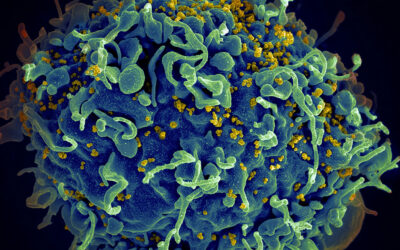A collaboration between bioengineers and immunologists is hinting at the possibility for long term relief from food allergies. Using encapsulating nanoparticles, they were able to present small doses of allergens to the immune systems of mice, which induced a change in the immune cells responsible for allergies and even prevented severe allergic reactions.
Food allergies are caused by a misguided immune response to a food or proteins making up that food. The arm of the immune system responsible for this involves what are called type 2 helper cells. These are white blood cells that when activated, usually in response to a parasite or other infection, set off a cascade of effects such as the release of cytokines and other molecules to counter infection.
However, when this response is triggered by food, and not an actual threat, the result is a severe allergic reaction. “It’s not really clear exactly what’s causing certain individuals to have that problem,” explained Jessica O’Konek, researcher at the Univeristy of Michigan Mary H. Weiser Food Allergy Center.
“But the issue is that once these allergic immune responses are developed, it so far has proven to be almost impossible to reintroduce tolerance,” she continued.
Nanoparticles to help the immune system cope
Currently, the best food allergy therapies can provide protection from accidental exposure by gradually exposing the immune system to small doses of the food allergen and exhausting the misguided helper T cells. These doses must be taken daily, orally, or with a patch, for example, to continually desensitze the immune system.
“It’s just making the cells that would cause the reactions too tired to do anything,” said O’Konek. True long term tolerance may be on the menu though, as O’Konek and collaborators at the University of Michigan and Northwestern University discovered that using a nanoparticle to expose cells to the allergen doesn’t just exhaust the problematic cells, it changes their function and ability to cause an allergic reaction in the first place.
The nanoparticles used in the study, published in Advanced Healthcare Materials, are roughly 500 nanometers in diameter and have a slight negative charge. According to Lonnie Shea, a biomedical engineer at the Univeristy of Michigan, the combination of size and charge specifically attracts cells of the immune system that scavenge for debris from dead cells, something the body does not consider dangerous.
Shea and others who work on ways to modulate the immune system found they could use the nanoparticles to exploit these scavenger cells. “They will process the antigen and present it, but they present it without the danger signals which can lead to acceptance of the antigen,” explained Shea.
Using these nanoparticles loaded with a specific allergen, the team wanted to target the helper T cells normally triggered by the allergen and get them to not respond. Not only did the problem T cells not respond, they were induced to become regulatory cells instead.
“Regulatory T cells are cells whose job is to stop an immune response,” said O’Konek, “in a lot of cases, their function is to prevent an immune response from going too crazy.”
Reprogramming immune cells
The nanoparticles are not desensitizing the cells and suppressing them, they are changing them from a pathogenic allergic cell to something that prevents an allergic response. “This is actually inducing that regulatory phenotype that goes in and prevents the response from initiating in the first place,” said Shea.
The team tested the nanoparticles in an egg allergy mouse model and after two intravenous doses of nanoparticles containing the allergy-inducing egg protein, anaphylaxis was significantly reduced after ingesting the allergen orally. Importantly too, no mouse treated with nanoparticles and given the allergen died.
It is still unclear how long the protection lasts, but O’Konek hypothesizes that while booster shots are likely necessary, the tolerance will last longer than anything currently available. She also predicts that because this treatment specifically targets the dysfunctional cells that react to the allergen and not the immune system broadly, the risks of side effects are low.
Making the nanoparticles is a straightforward process, according to Shea, and because they are made using the same material as biodegradable sutures, the safety of this platform is already established.
The research collaboration is already testing different allergens and using food extracts rather than single proteins as this would be a benefit to manufacturing the treatment too.
According to O’Konek, because food allergies all work with the same T helper cell response, the promise is a true platform where any allergen could be encapsulated and used to induce tolerance.
Reference: Michael Saunders, et al., Allergen-encapsulating Nanoparticles Reprogram Pathogenic Allergen-Specific Th2 Cells to Suppress Food Allergy, Advanced Healthcare Materials (2024). DOI: 10.1002/adhm.202400237
Feature image credit: Jocelyn Morales on Unsplash

















